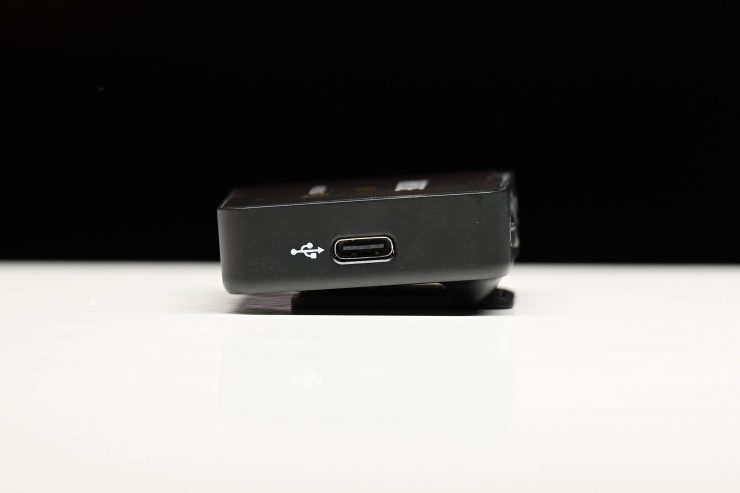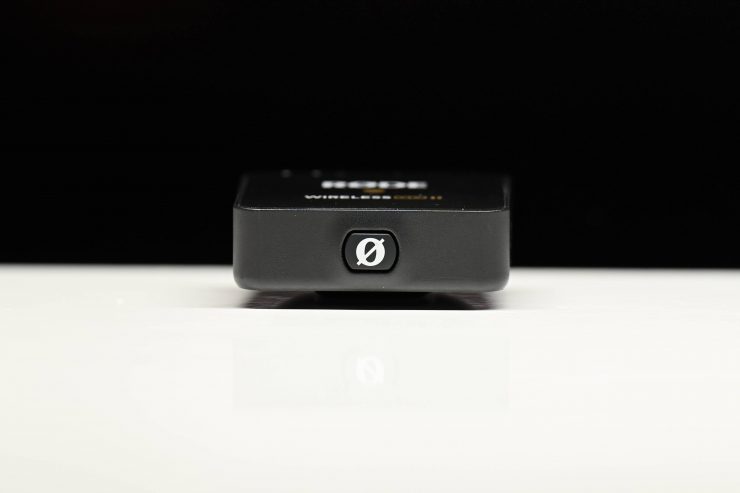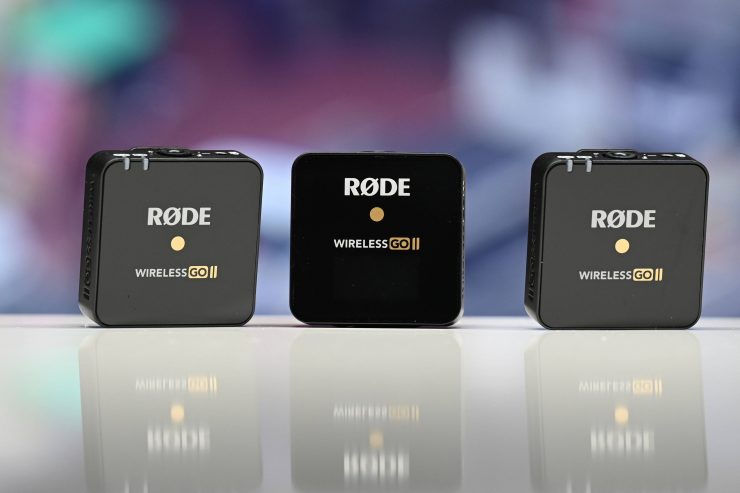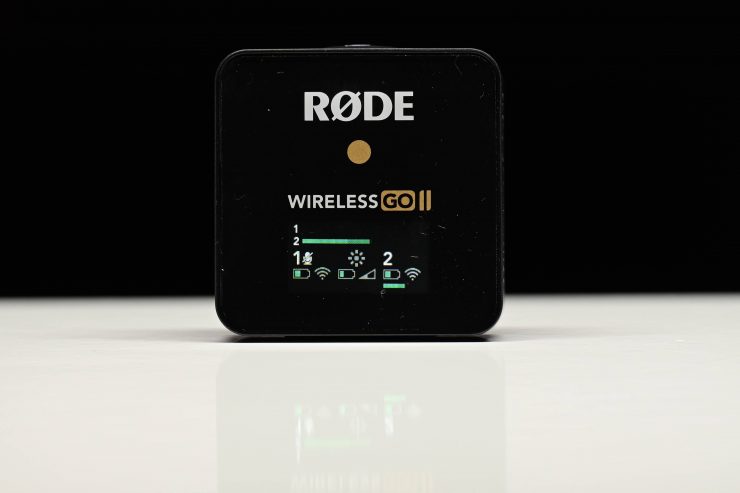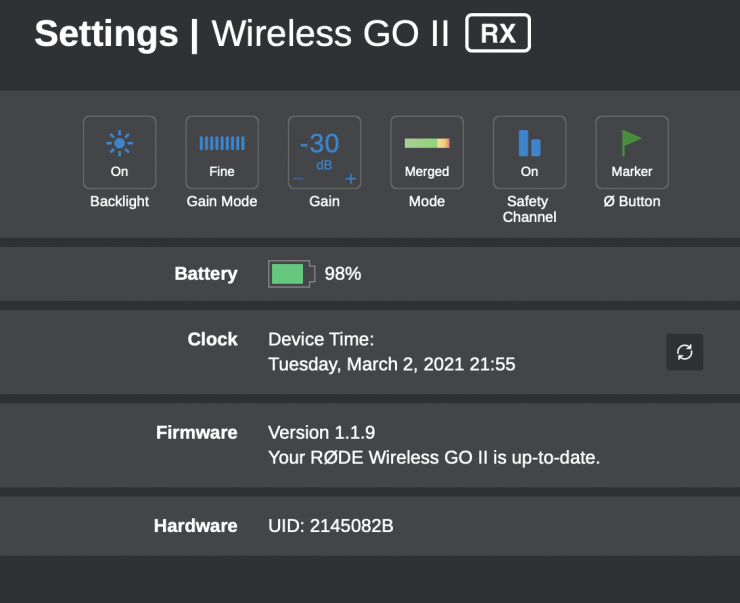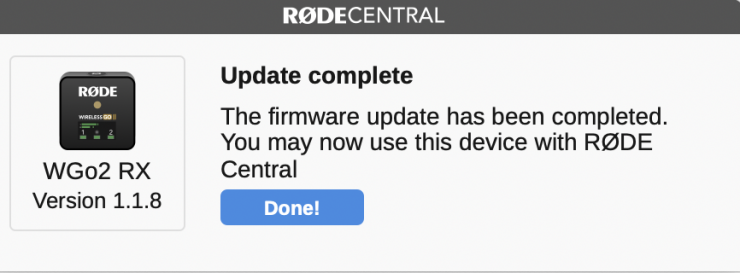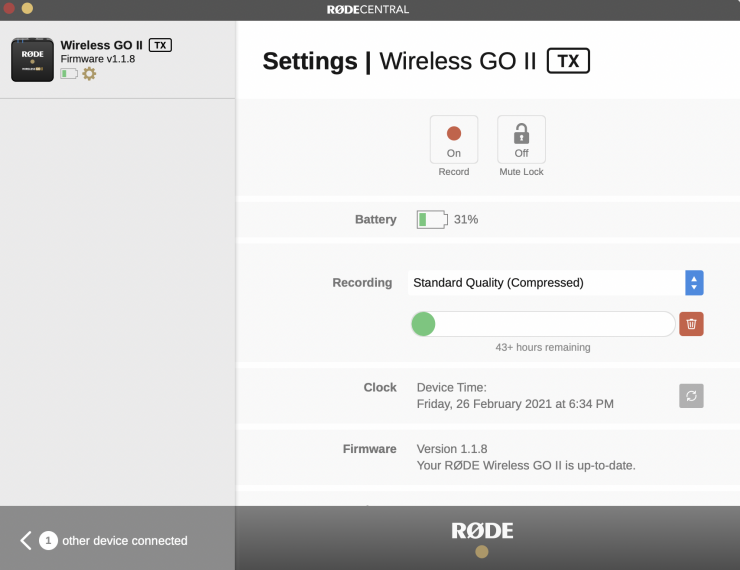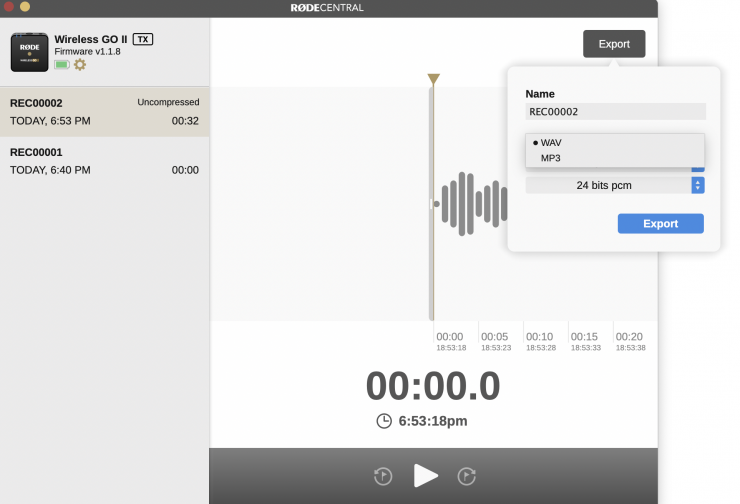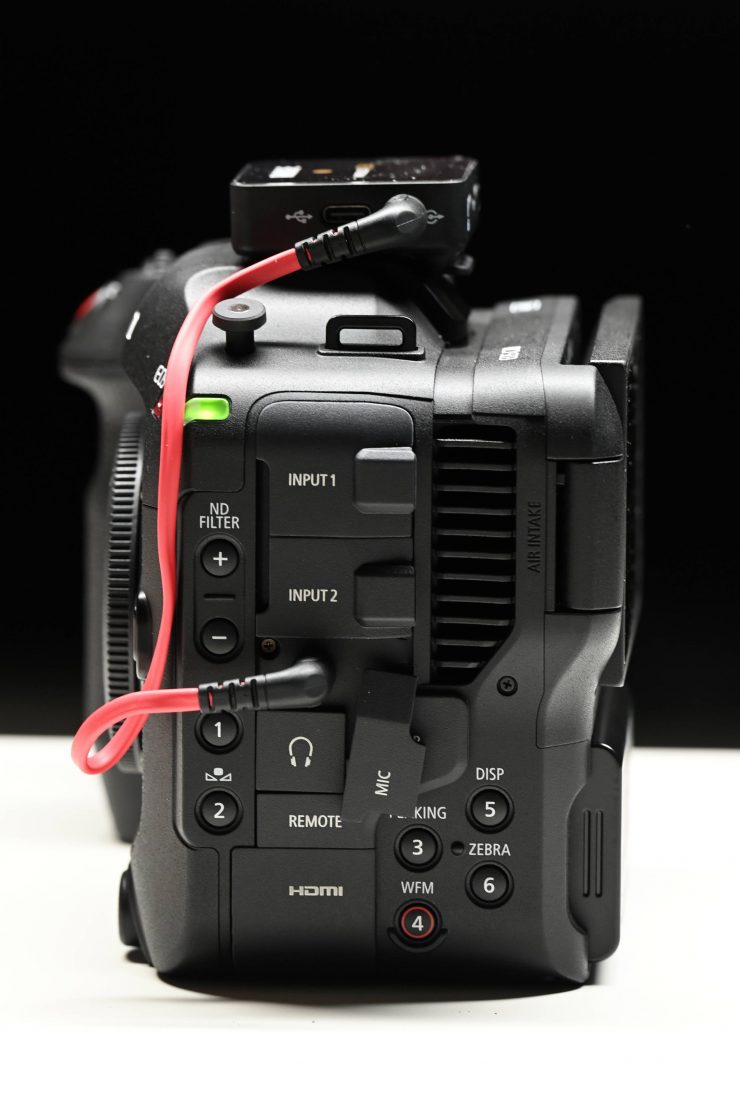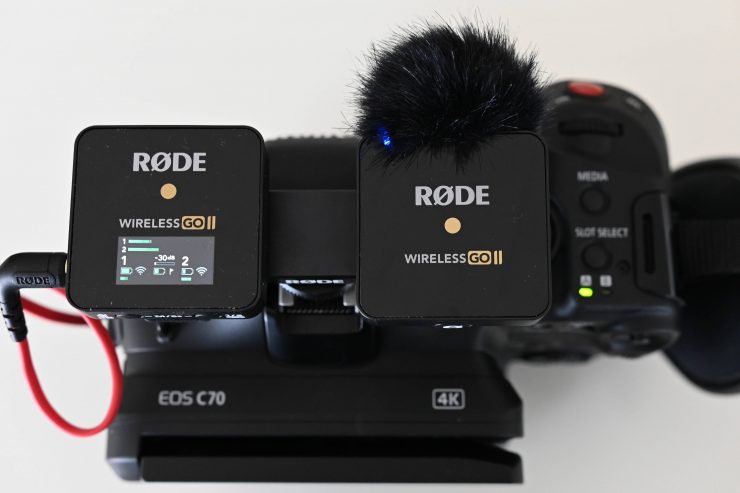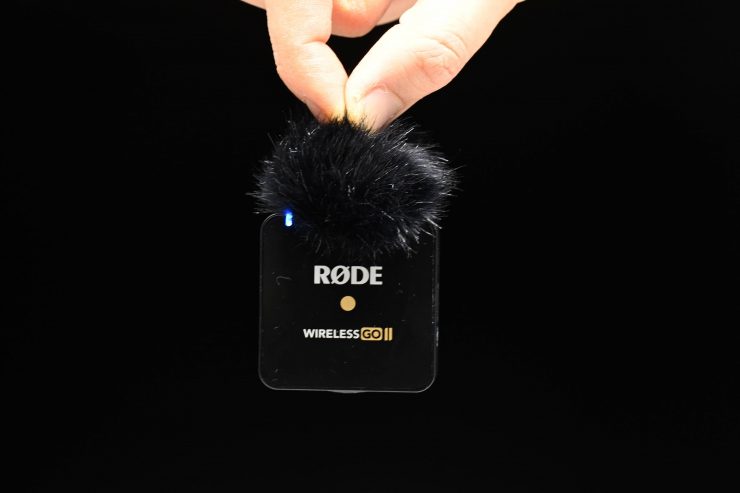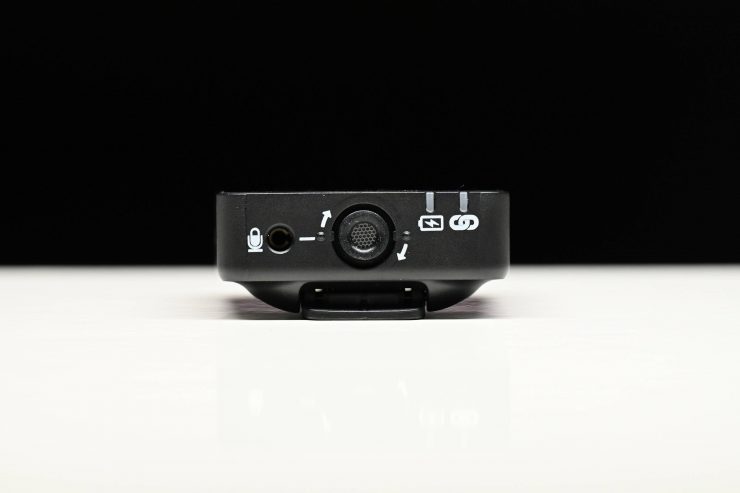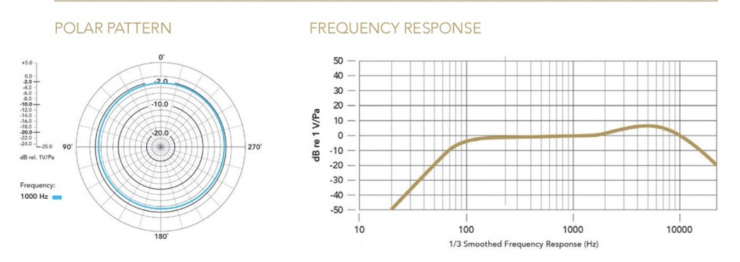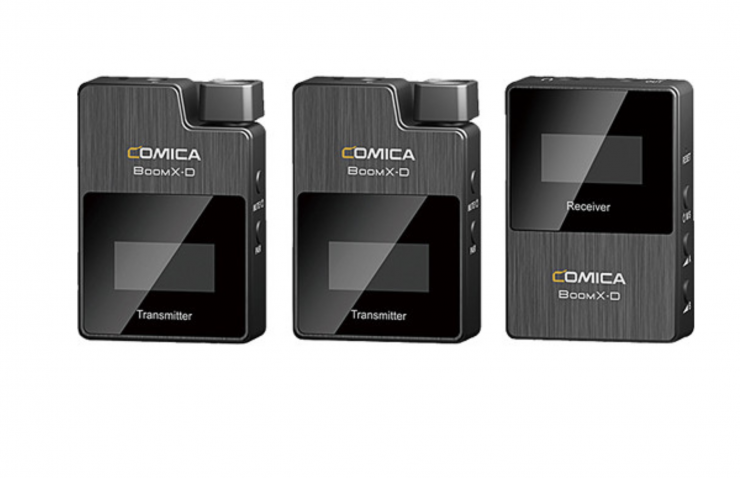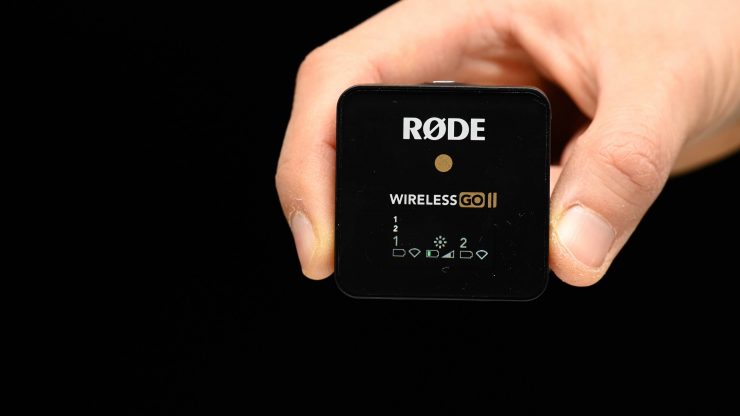
RØDE recently announced the Wireless GO II, a follow-up to the very popular and widely used Wireless Go that was announced back in April 2019.
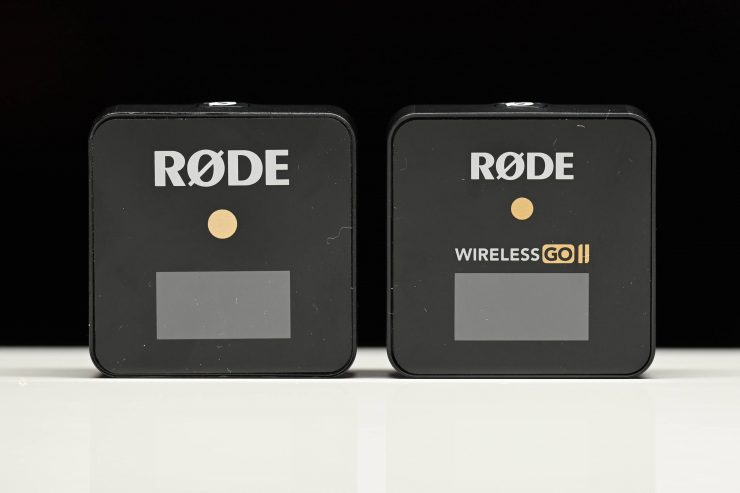

RØDE Wireless GO RX on the left and RØDE Wireless GO II RX on the right 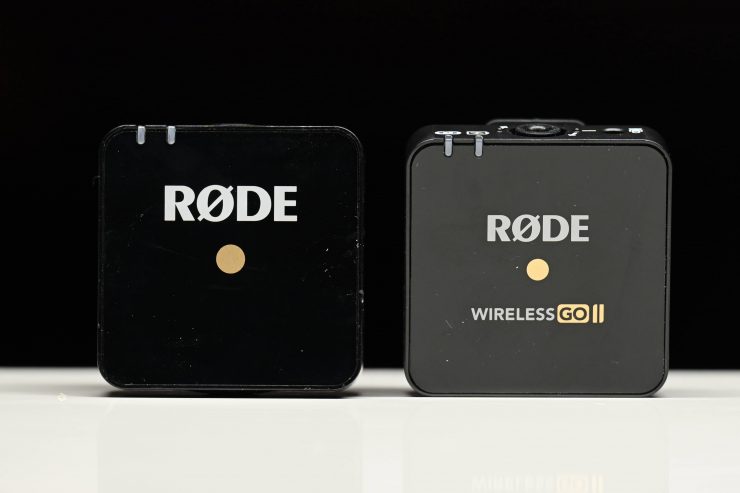
RØDE Wireless GO TX on the left and RØDE Wireless GO II TX on the right
The original Wireless Go was a tiny, digital wireless microphone system that used a 2.4GHz digital wireless transmission. At the time of its release, it was the World’s smallest wireless microphone system. It immediately struck a chord with budget filmmakers, YouTubers, and Vloggers.
Over the last few years, we have seen countless imitations of the Wireless Go come to market from a wide array of manufacturers. Lots of companies expanded on RØDE’s original concept and brought out systems that featured dual TX units and an RX unit that could receive signals from two transmitters. I personally believe that the RØDE Wireless GO II was in direct response to some of these competing products that came to market.
I wanted to look at the Wireless GO II in more detail to see how it has improved over the original. So without further ado, let’s get on with it.
So what is new & improved & what is the same?
The Wireless GO II doesn’t stray too far from the original, and RØDE has kept the same pocket-sized form factor, but it has added a host of new features that have been implemented to make it a more capable and versatile product.
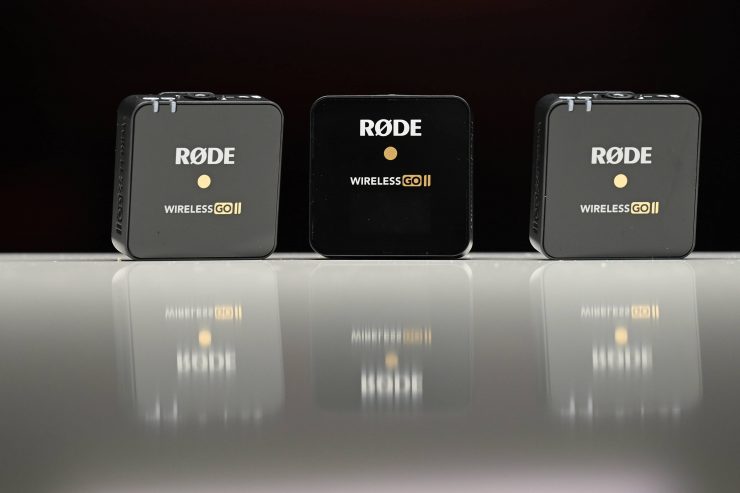
The Wireless GO II offers the same pocket-sized form factor as the original. The receiver weighs just 32g and the transmitters weigh just 31g.
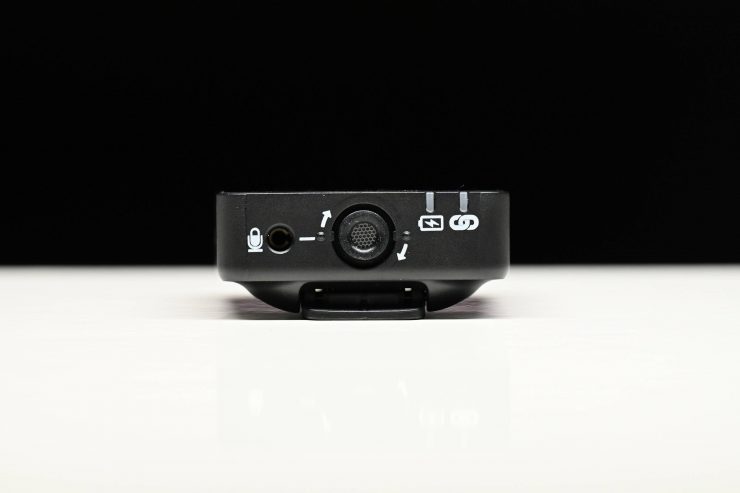
Each transmitter features the same in-built omnidirectional condenser capsule found on the original Wireless GO.
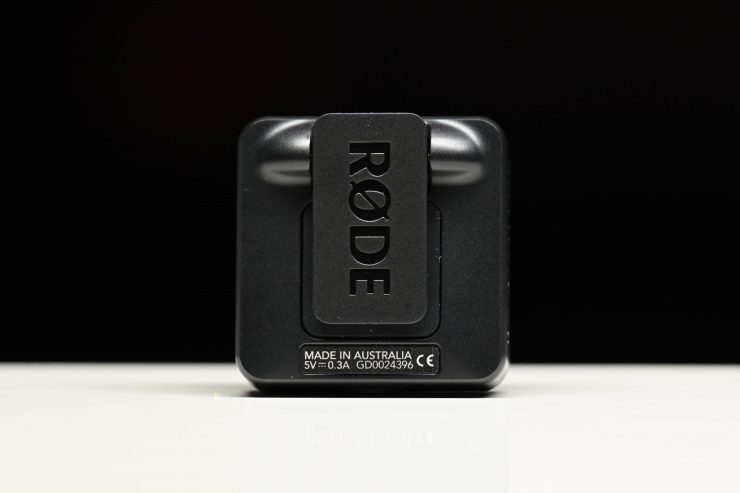
The transmitters and receiver feature the same clip design as the original. This also means the extensive range of Wireless GO accessories work with the Wireless GO II, including the Interview GO and MagClip GO.
So enough about what is the same, let’s see what is new.
New Features
- Dual channel recording
- Extended range and improved transmission stability
- On-board recording capabilities
- Flexible Gain Control
- Safety Channel
- RØDE Central app
- Universal compatibility with cameras, mobile devices and computers
We will dive deeper and go into all of these new features further down in the review.
Build Quality
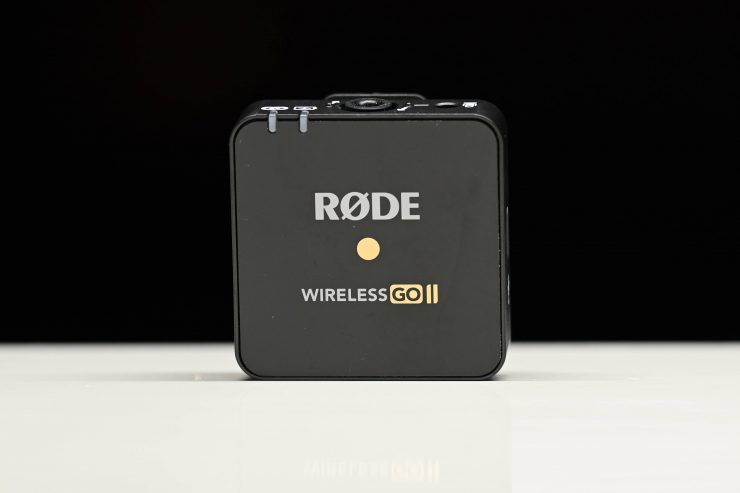
The build quality feels and looks like it is identical to the original versions. With the original Wireless GO, I was slightly worried about how well the buttons would stand up over time. However, I haven’t had any build quality issues with the original over the last few years and it has stood the test of time.
The Wireless Go II looks to be utilizing the exact same construction and be made out of the same materials as its predecessor. While it is solidly constructed it isn’t going to have an all metal construction like a much more expensive wireless system. In saying that, I think the build quality will be perfectly sufficient for most users. I have dropped the original versions many times and they have never stopped working.
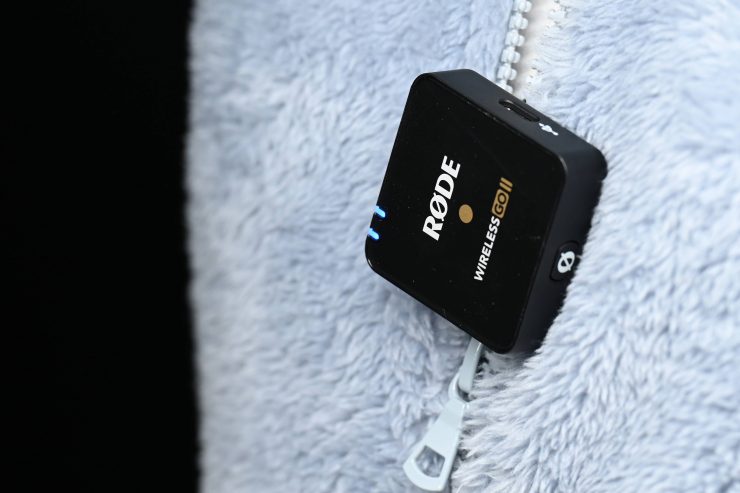
The plastic belt clips are exactly the same as those found on the original, and again, I haven’t personally had one of these break or fail yet.
Mic Input Jack & built-in omnidirectional condenser capsule
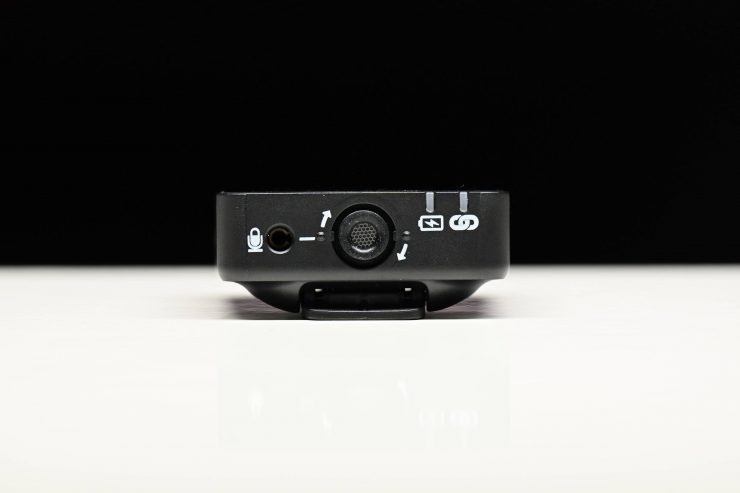
Just like its predecessor, the Wireless GO TX not only has a 3.5mm mic input jack but it also has a built-in omnidirectional condenser capsule. This is the same built-in microphone that is found on the original.
The internal capsule’s omnidirectional polar pattern is claimed to ensure reliable audio pickup even if mic placement is less than ideal, and the 50 Hz to 20 kHz frequency range naturally attenuates sub-bass tones such as rumble and boominess.
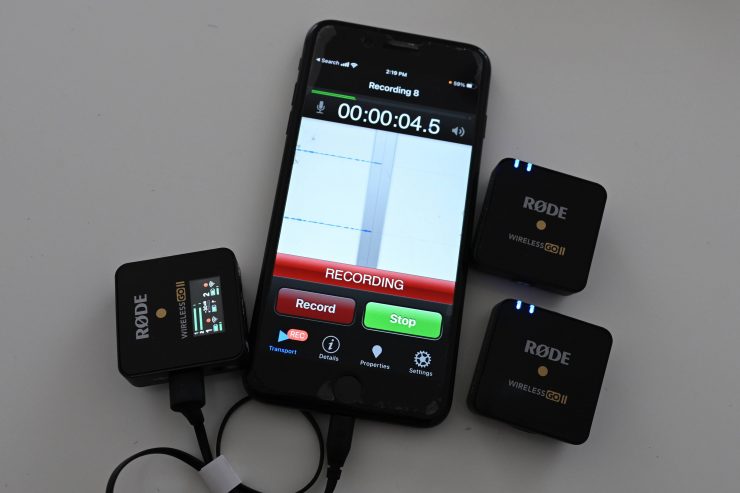
The included 3.5mm TRS output cable lets you connect the RX unit to your camera or audio recorder. The optional SC15 USB-C to Lightning cable allows you to record directly to a smartphone or other compatible device.
You can plug your headphones directly into the output of the RX unit to monitor when recording into a smartphone or tablet.
I wish that RØDE had have gone with a locking connector instead of utilizing the standard 3.5mm mic input jack.
Dual channel recording
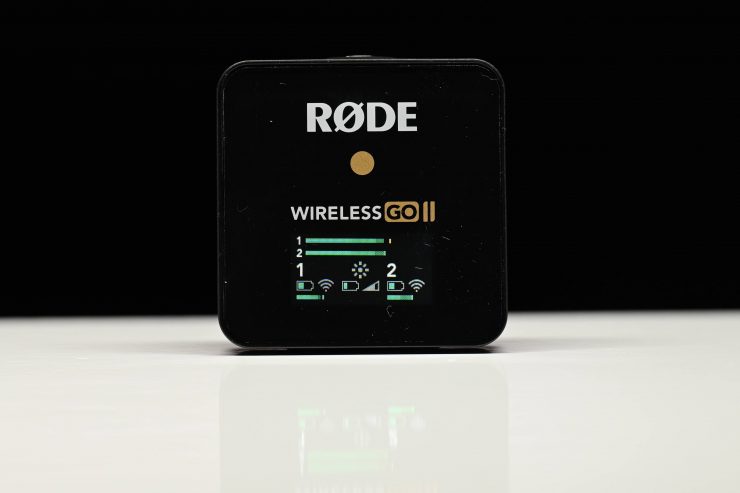
The Wireless GO II is a dual channel wireless microphone system, which means you can record two sound sources simultaneously or use it as a single channel wireless microphone.
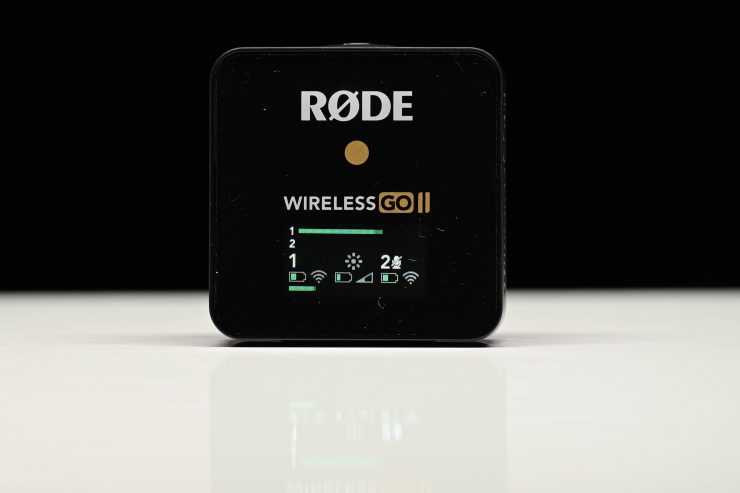
You can mute either channel 1 or channel 2 or both channels if you want to.
Frequency band & Range

Just like RØDE’s RØDELink wireless systems, and the original Wireless GO, the Wireless GO II utilizes the same 2.4 GHz frequency band. However, the Wireless GO II gets an all-new Series IV 2.4GHz digital transmission with 128-bit encryption.
By using the 2.4 GHz frequency band users don’t need to worry about scanning for channels to get a strong signal.
RØDE claims that this delivers an extended range of up to 200m / 656′ (line of sight). The original Wireless GO has a range of 70m / 230 feet. I will put this claim to the test further down in the review.
This is a big increase in claimed range and it will be interesting to see how the Wireless GO II performs over larger distances. One of the biggest problems with the original version was that the range was quite limited and you would inevitably start to get break up once you got within 20m of the maximum operating range. Once you lost line of sight the operating distance got greatly reduced.
RØDE also states that the Wireless GO been optimized for extremely stable operation in dense RF environments. The internal antenna has also been redesigned.
On-board recording capability
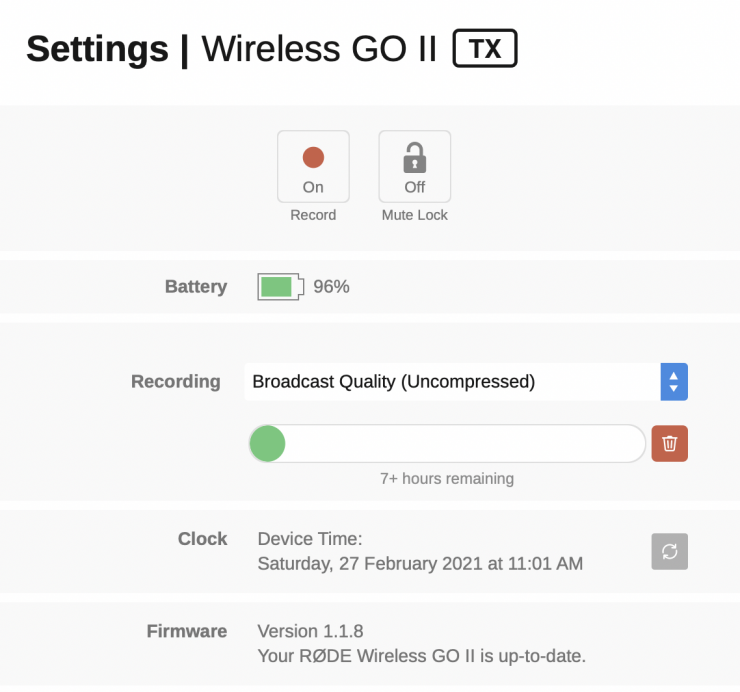
The Wireless GO II now features on-board recording capabilities. You can record over 24 hours of audio directly to each transmitter (without the need for an SD card) as a failsafe against dropouts and other audio issues. This is great feature especially for a wireless microphone system that works on the 2.4GHz frequency band.
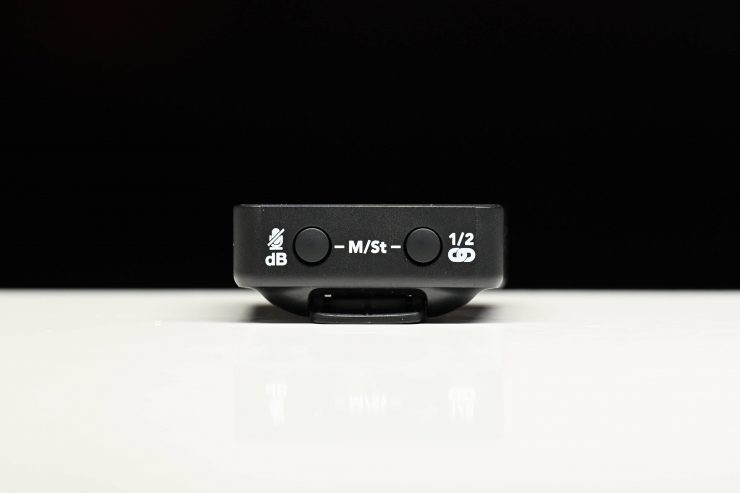
RØDE gives you the option to switch between mono or stereo recording modes. This means you can record each channel separately or combine them for more flexibility later on. Update: Mono & Stereo has now been renamed Merged & Split Mode
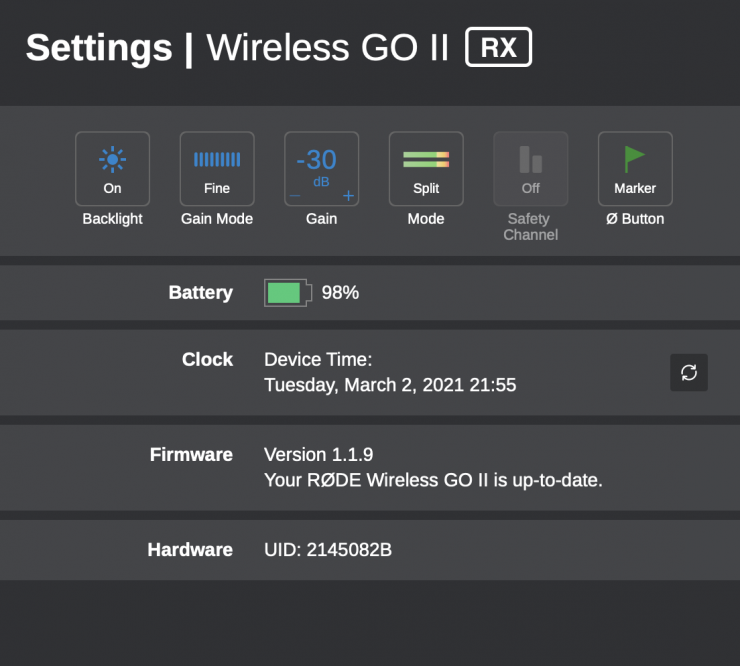
‘Merged‘ or ‘Split‘ mode allows you to record each transmitter onto separate channels on the output or combine the two into a single output.
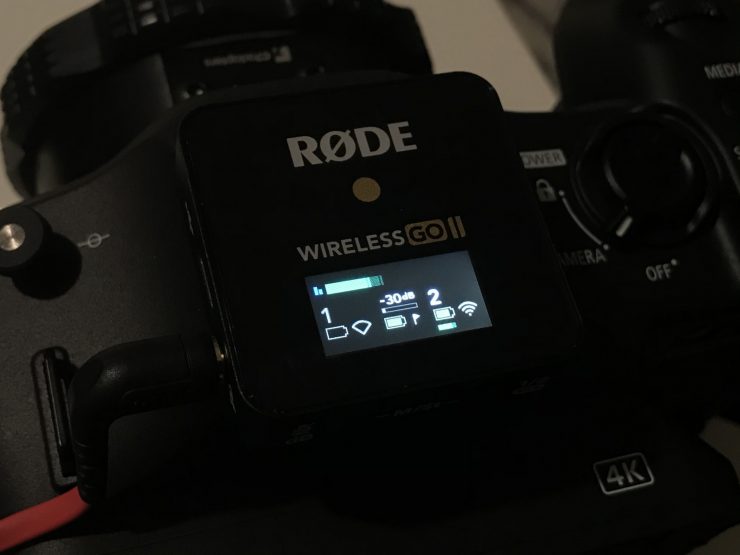

Merged Mode 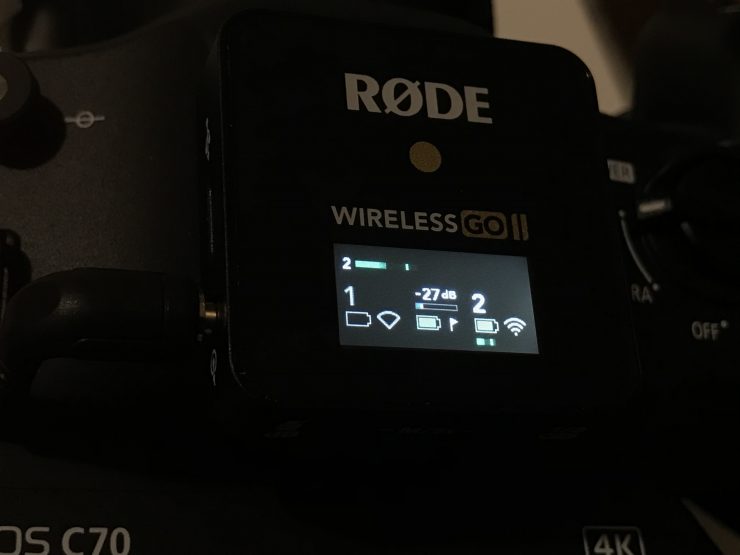
Split Mode
To switch between ‘Merged‘ and ‘Split’ mode, you press and hold both buttons on the receiver for three seconds and keep an eye on the output level meter on the LED screen.
When there are two meters, you are in ‘Split‘ mode. This means that each transmitter’s output is being recorded onto separate channels (left and right) on the Wireless GO II’s output.
When there is just one meter being shown, you are in ‘Merged‘ mode. This means that the two transmitters are being combined into a single summed output. It is best to use this mode if you want the audio recorded onto both channels, or if you are using the safety channel.
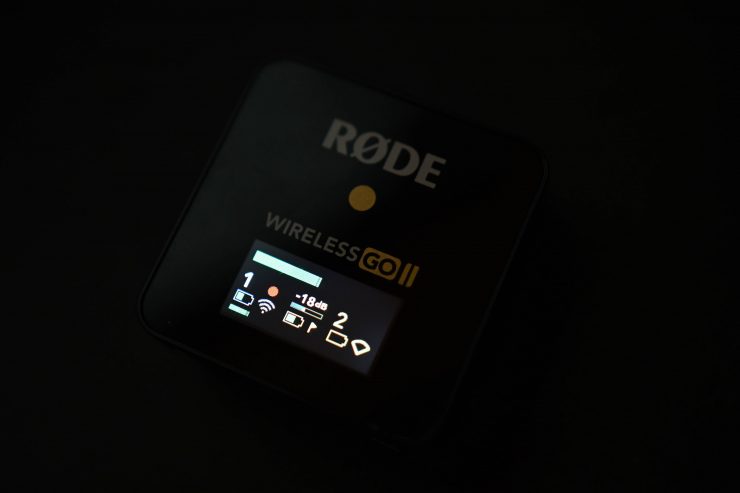
When the onboard recording is activated you will see a red record circle that you can see above the signal strength indicator.
Yes, you can record and transmit at the same time. This is the case no matter what country you buy your RØDE Wireless GO II in.
Flexible Gain Control
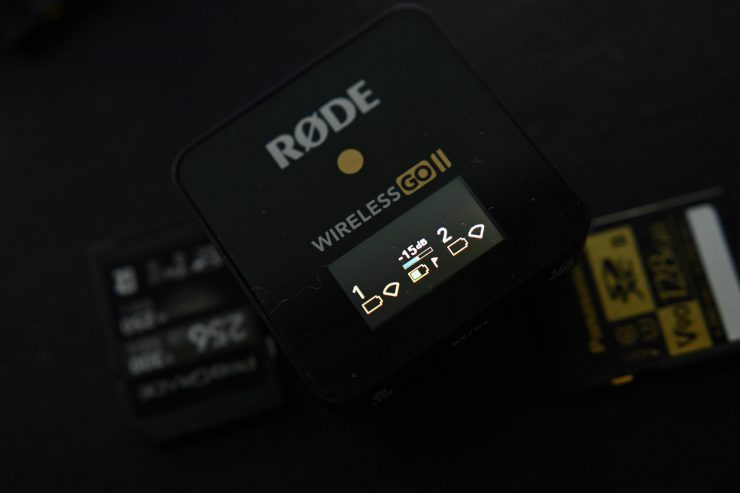
There is now more flexibility when it comes to gain control. A three-stage pad is expandable to a 10-stage pad. This makes adjusting levels a lot easier than just having the three-stage pad that was found on the original Wireless GO.
You can simply just press the db button on the RX unit to adjust the gain control in 3db increments.
My advice is that you just set your RX unit to the flexible gain control setting and leave it there. It gives you way more finite adjustment than having it in the default setting which just offers Low, Mid, and High gain settings.
Safety Channel
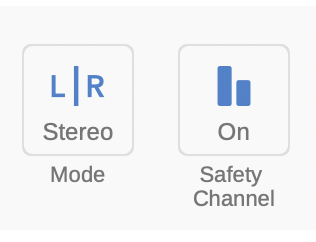
A safety channel allows you to record a second channel at -20dB as a backup in case the main channel distorts. This is an extremely handy and useful feature to have.
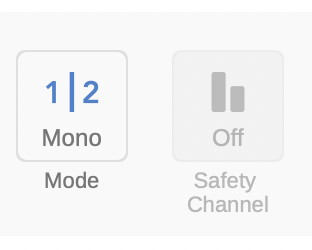
The safety channel can only be turned on when you are in the L/R Stereo (now called the ‘Merged’ mode). These recordings contain two channels of identical audio. However, enabling the safety channel will reduce the volume of one channel by 20dB.
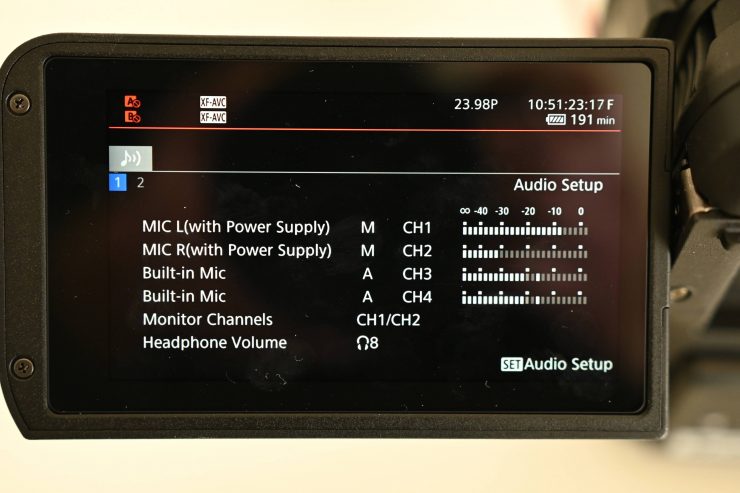
Being able to record a safety track is a nice option, especially in run and gun situations where the audio levels can suddenly change. Above you can see that I am using the safety track option to record two different audio levels from the same microphone.
Now, you need to be aware that the Safety Channel can only be accessed by using the RØDE Central App. However, once you have it preset you won’t need to go back into RØDE Central app.
Use it directly as a USB-C Mic Source
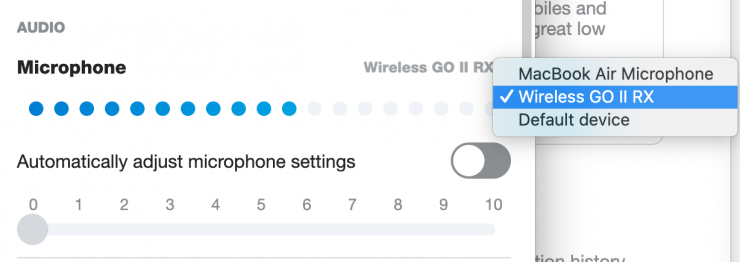
You can plug the RØDE Wireless GO II RX unit directly into a computer via the optional SC16 USB-C to USB-C cable. This lets you utilize your Wireless GO II system as a direct mic source for online video calls in Skype, Zoom, etc.
Display & Control
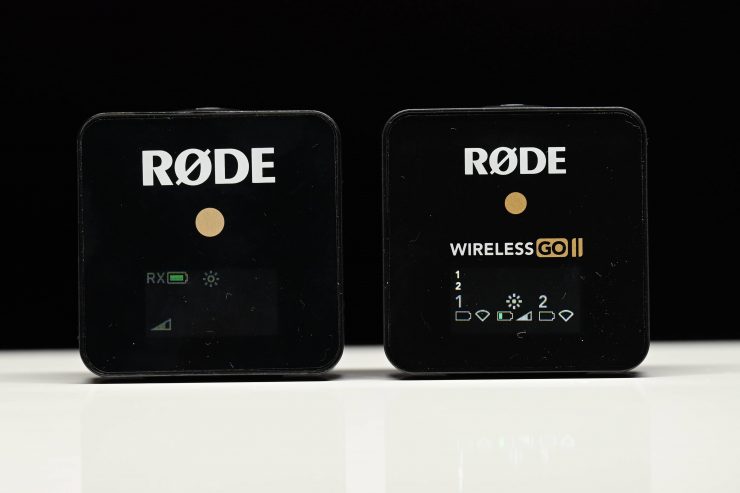
The Wireless GO II shows a lot more information on the built-in display than the previous version. The only downside is that what you can physically control on the actual RX unit itself is limited.
RØDE Central app
The new RØDE Central app gives users complete control over all features and functions of the Wireless GO II. The VideoMic NTG, AI-1, and other microphones will be integrated into the app further down the track.
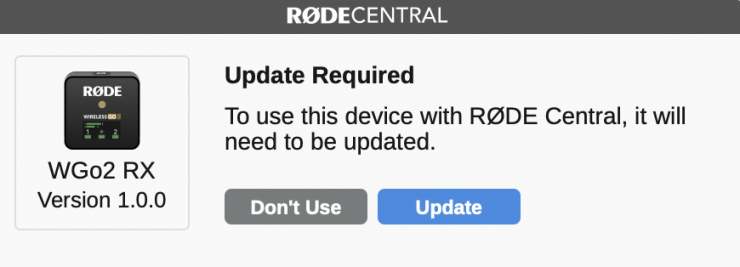
When I first plugged the RØDE Wireless GO II RX unit into my computer I had to update the firmware on the RX unit to get it to work with RØDE Central.
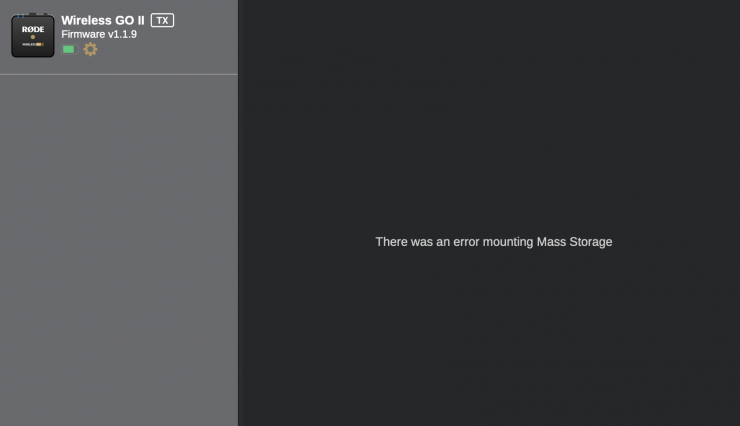
Now, I also had quite a few instances where the units would not mount and the app would also occasionally crash. This happened with the latest updated version of the app. After updating one of the TX units to the latest firmware
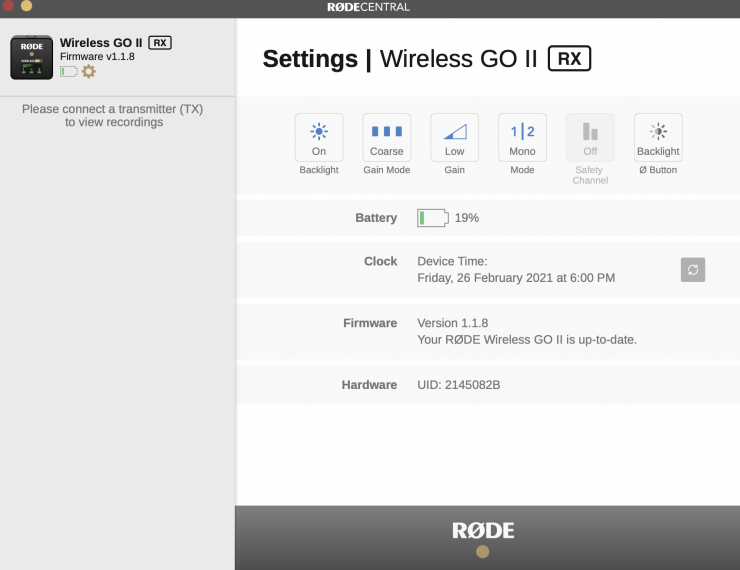
After you connect to RØDE Central you are greeted by the above screen.
By clicking with your mouse you can make changes. Above you can see what is possible to do. Now the only problem here is once you make a change and you disconnect the RX unit, some of the settings are stuck like that until you plug it back into the computer. You really need to think about what your requirements are and make changes in advance before you start using it.
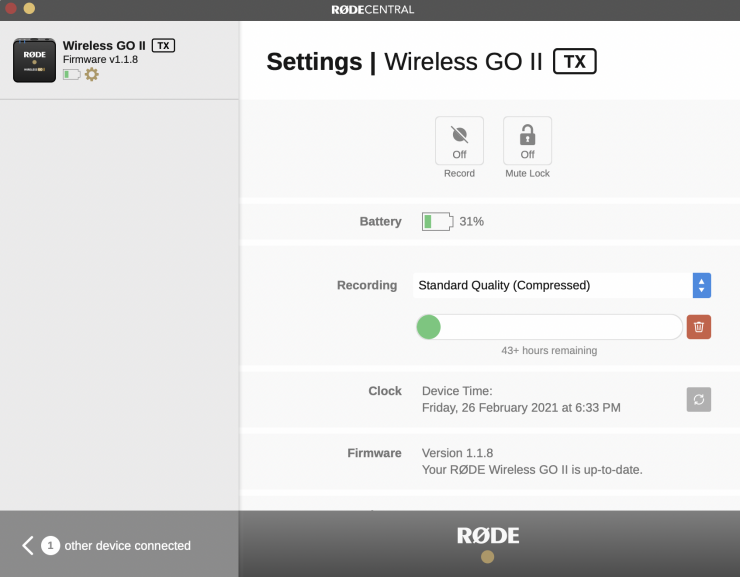
When you plug one of the TX units in here is where you can turn on the on-board recording option.
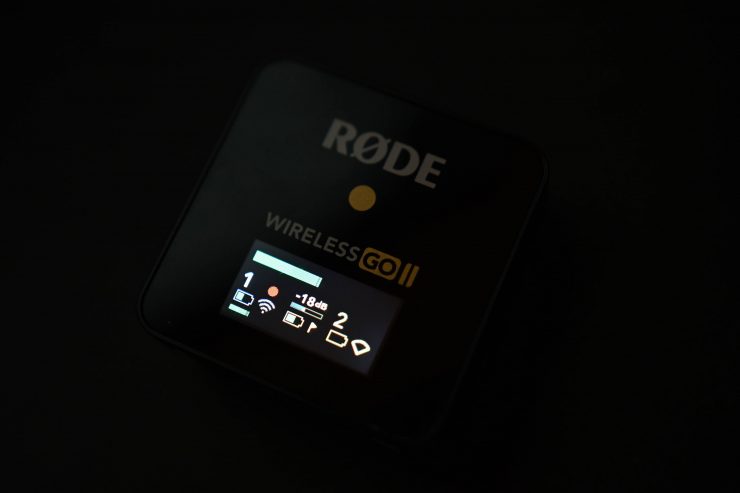
Once you have turned on the on-board recording the TX unit will automatically start recording as soon as you have both the TX and RX units turned on. You will see a red dot that shows you that the TX unit is recording on the screen of the RX unit. There is no way of stopping or starting recordings from what I can see. The only way to do it is to physically turn off the unit. UPDATE: I did find another way to stop the internal recording. You can press the 1/2 button on the bottom of the RX unit and then it will select CH1, if you press the button once again it will select CH2. Once the channel you want is selected you hold that same button down again for 3 seconds and the recording will stop. The caveat is that you are essentially unlinking that particular TX unit from the RX unit so the transmission also stops.
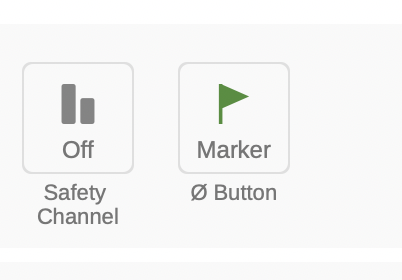
The best way to deal with the fact that you can’t start and stop individual recordings is to set up your RX unit so that you can press a button to create a Flag marker. This way you can at least press the button to create a Flag marker that you will be able to see in the RØDE Central app.
Just be aware that there is no indicator on the actual TX unit that it is recording.
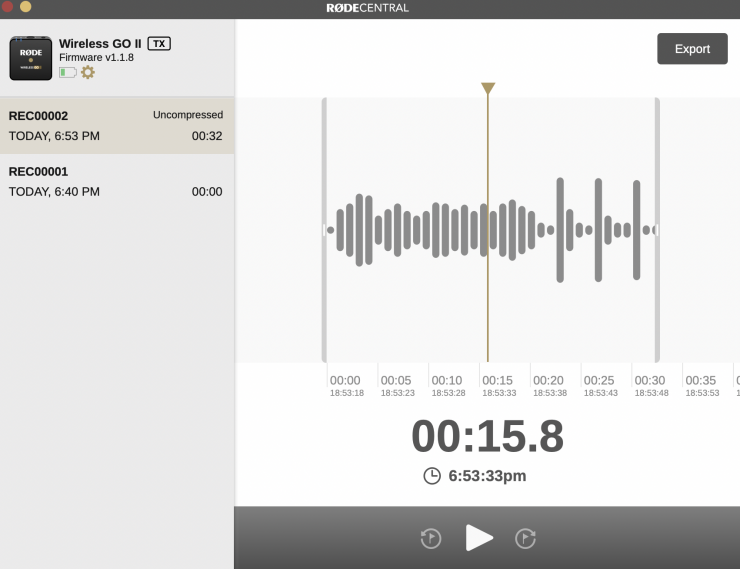
Once you have done a recording and you plug the TX unit into your computer and open up the RØDE Central App you can see the recording or recordings that were made.
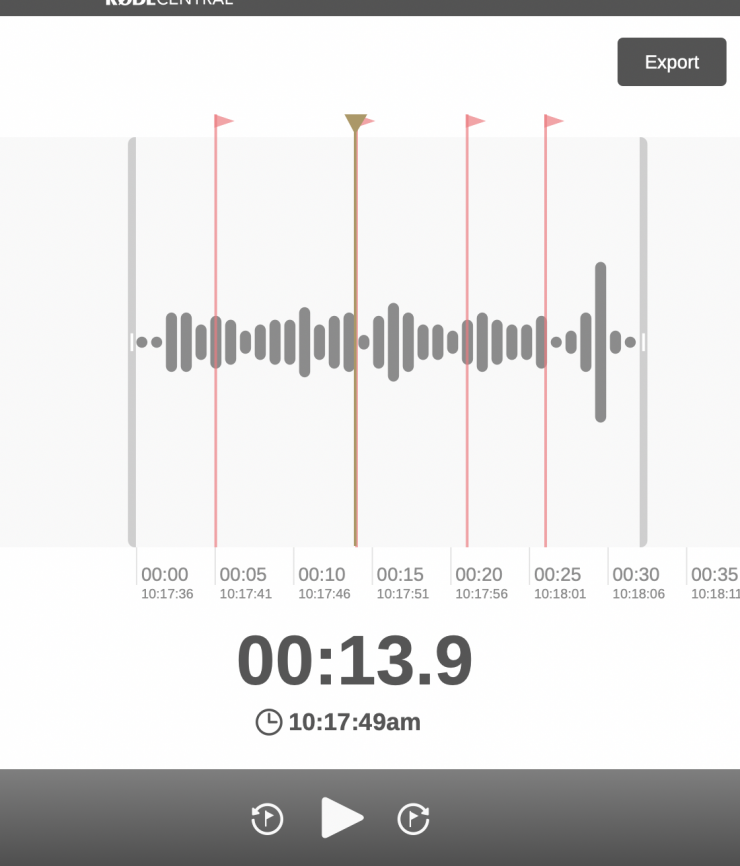
Unfortunately, there is no way of editing the audio in the app. This is an issue because if you use the Flag marker button to create different Flag marks you have no way of just exporting those segments separately.
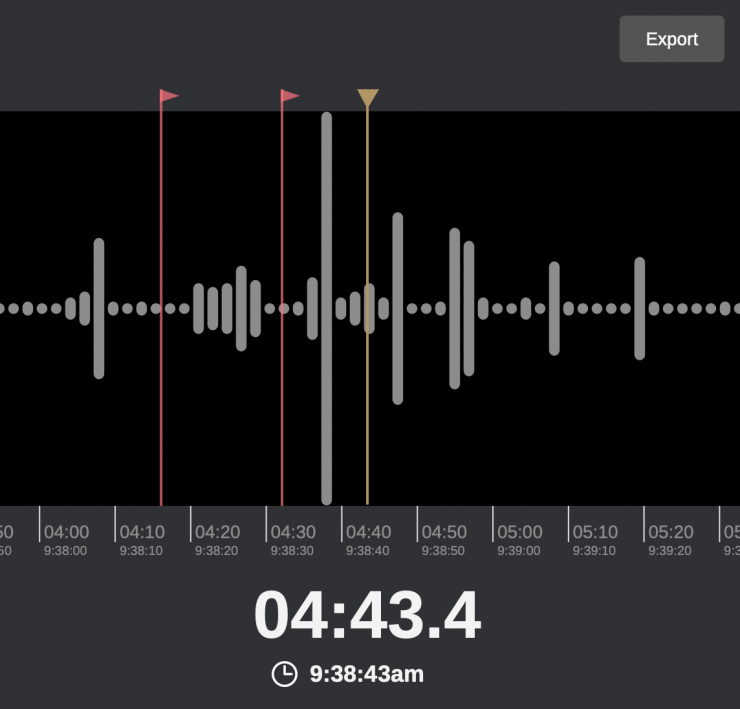
The internal recording will also show you where there were drop outs in the transmission between the TX and RX units. These are shown as red markers. I’m not sure why the actual markers you create are also red as well. This is a little confusing.
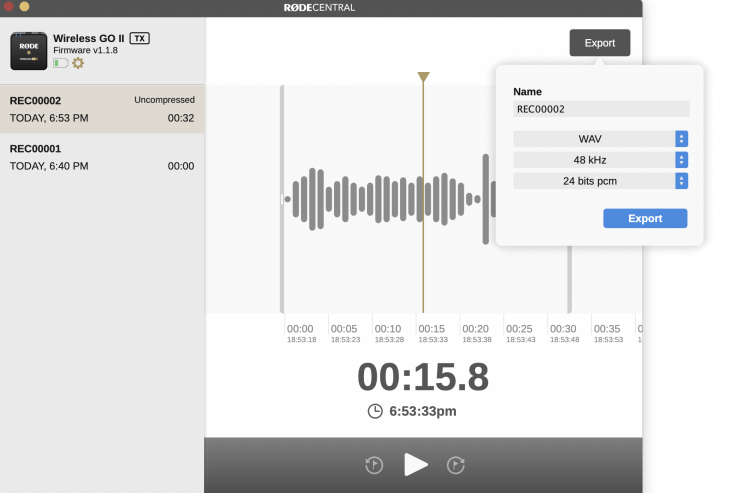
You can then export that file. You have the choice of exporting in WAV or MP3. Now, according to RØDE’s own website, they state that: There are options to export either the entire recording or only a selected section. I don’t see any option anywhere that lets me select just a certain section.
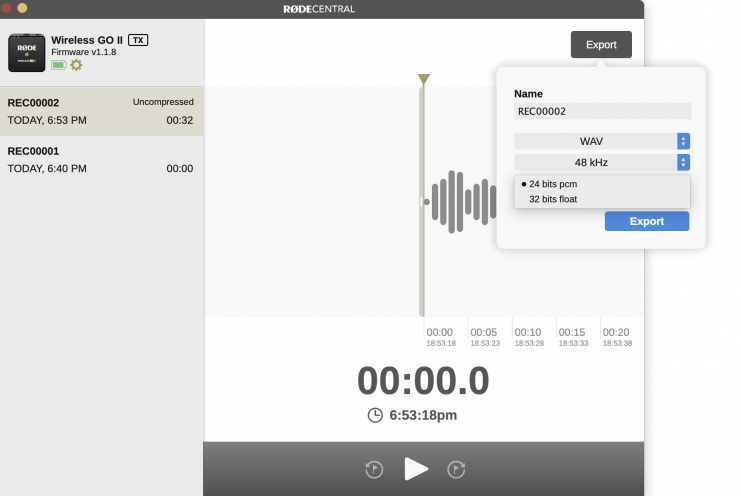
You can use choose from either 24 bits pcm or 32 bits float. Hold on, 32 bits float? I don’t quite understand how this is possible. Surely if you aren’t recording 32 bit float how can you suddenly turn it into 32 bit float?
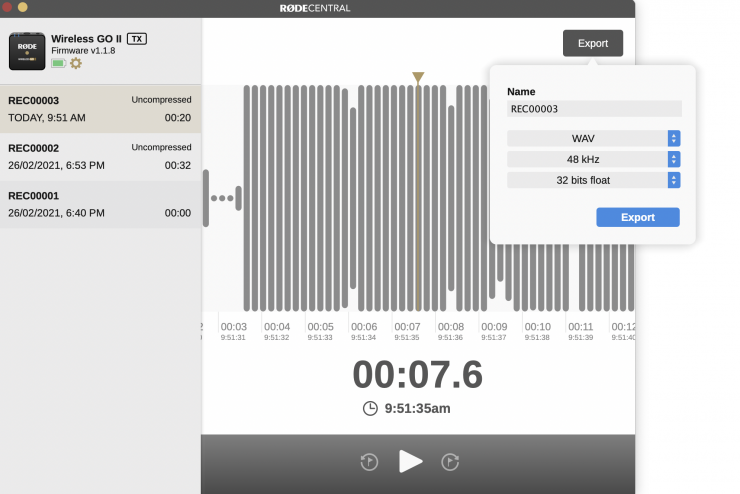

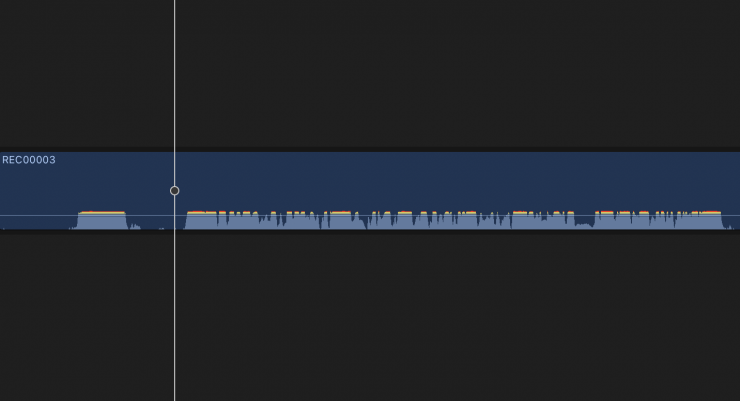
the untouched exported 32 bits float audio file
I decided to do a test using the internal recording option by recording a clipped signal and then exporting it in 32 bits float. What I found is this made no difference whatsoever. The exported 32 bits float audio was not able to be recovered. It was still unusable even after export and attempted correction.
I have reached out to RØDE to try and find out more about the 32 bits float export setting. I will update the post once I get an answer. Update: The WAV 32-bit float setting exports an upscaled 32-bit float format file, for compatibility with similar files in a DAW environment. It also offers possibilities for feature expansion via future firmware updates.
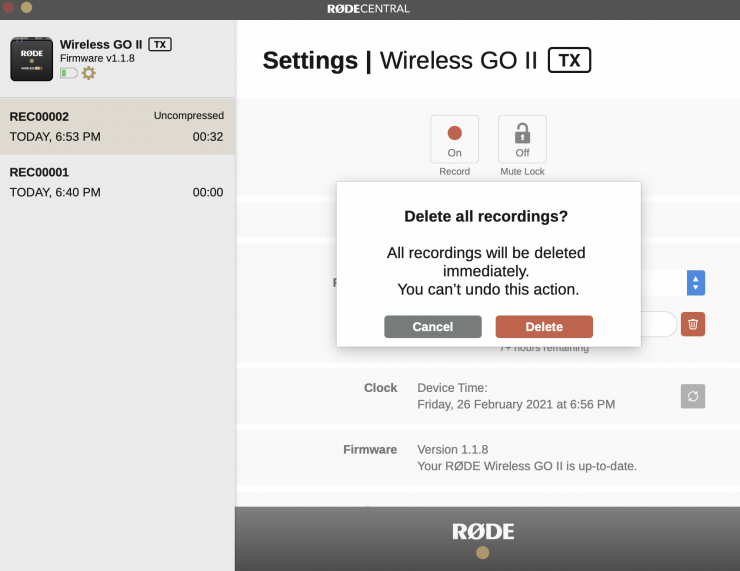
Unfortunately, you can’t delete individual recordings. If you choose to delete the app will delete all of the recordings. Hopefully, this is something that can be fixed via firmware.

You can also rename the TX units if you would like.
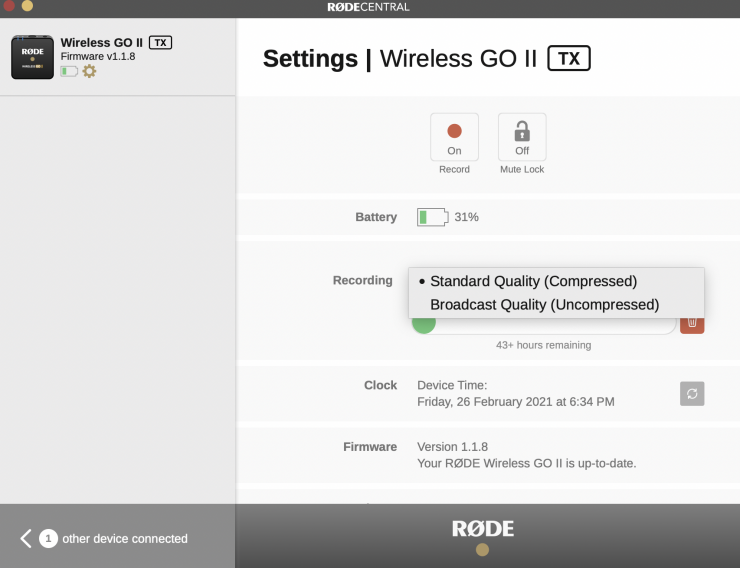
You can also select to record in either compressed or uncompressed.
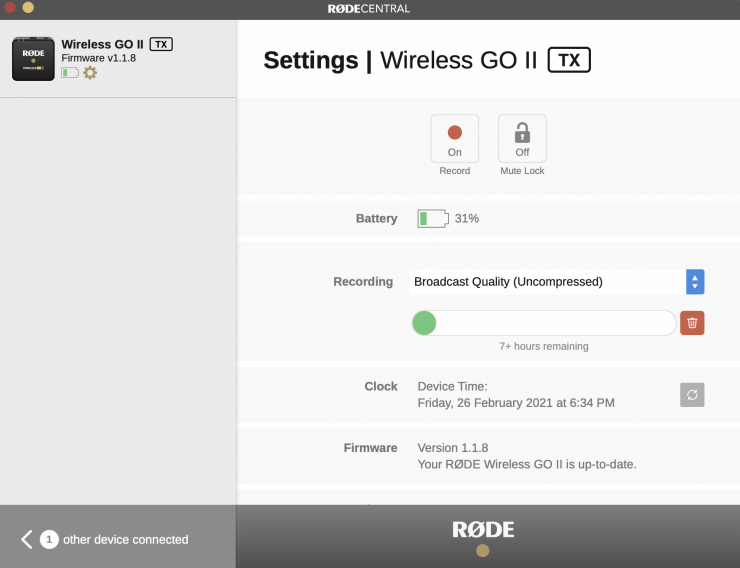
What you clearly need to know is that if you choose uncompressed the number of hours you can record for gets greatly reduced. When recording compressed audio you can get more than 43 hours. Once you switch to uncompressed that figure goes down to a little more than 7 hours.
Now, the RØDE Central app isn’t currently available as an app for mobile devices. It only works with Mac and Windows computers. This is something that will change soon.
No Timecode
The internal recordings don’t have any way of being time code synched. This makes it very difficult to deal with those recordings later on.
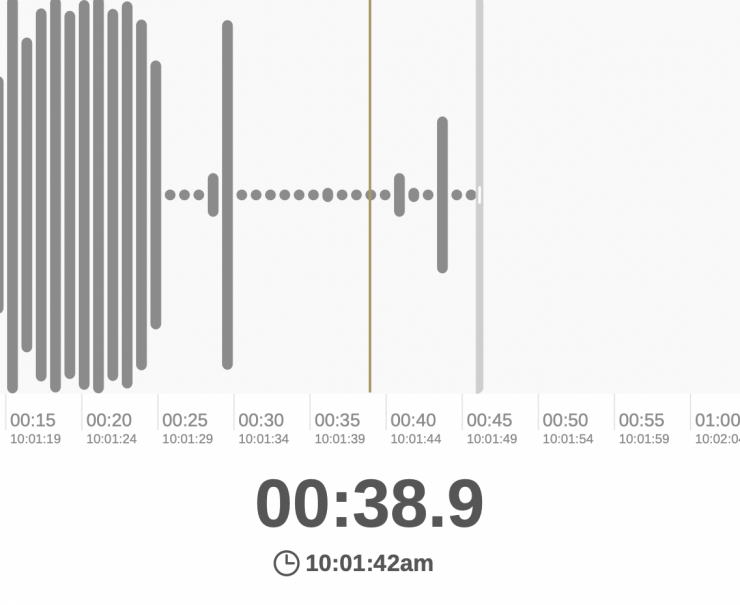
The only small saving grace is that if you have your timecode on your camera set to time of day the internal recordings do get captured with metadata that shows the time they were recorded. Now, unfortunately, you can only see that time of day inside the RØDE Central app. At least that way you could find the corresponding audio and then label it when you export it. None of this is ideal, especially if you have lots of individual recordings. Not being able to stop and start the internal recordings when you want is a problem.
It needs a mobile app stat!
While the RØDE Central app works well I don’t see too many people carrying around a laptop just to make certain changes to their Wireless Go II systems. An iOS and Android version of this can’t come soon enough.
Without plugging your RØDE Wireless GO II into a computer you can’t access any of the features such as internal recording, safety track, etc.
I may be being a little overly critical here because you can just preset a lot of these features and then you don’t need to worry about it anymore. However, you should be able to access all of the features and make changes without needing to hook your Wireless GO II units up to a computer.
Universal compatibility

The RØDE Wireless Go II features a 3.5mm analog TRS output, USB-C and iOS digital audio output. This makes it universal compatibility with more cameras, mobile devices, and computers.
Real World Performance
Claims and specifications are one thing but how does the RØDE Wireless GO actually perform in the real world? For me, there a number of things that are important when using wireless microphone systems:
- Usability
- Reliability
- Audio quality
- Range
- Battery Life
- Usability
Usability
The current usability with the RØDE Wireless GO II is a little hit and miss. Pairing up the TX units with the RX is very easy and making basic adjustments is straightforward, however, as I mentioned earlier making other adjustments requires hooking your RØDE Wireless GO II’s up to a computer and using the RØDE Central App.
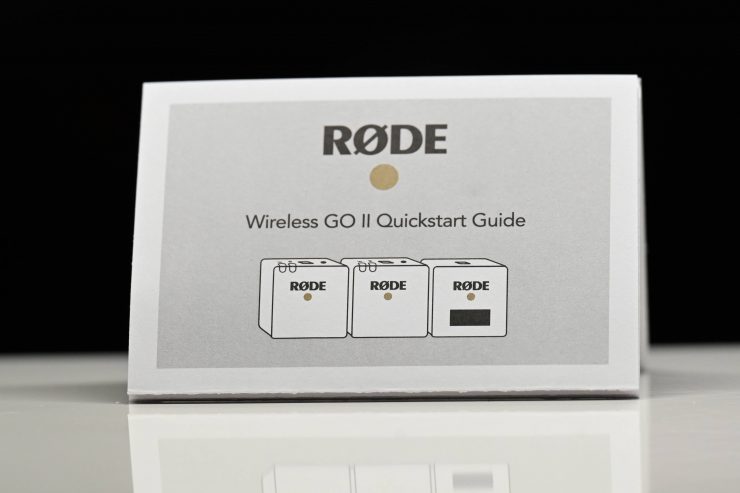
RØDE does include a Quickstart Guide with the kit, however, this doesn’t tell you much. You are better off going to the RØDE website to find out information about how to use the product.
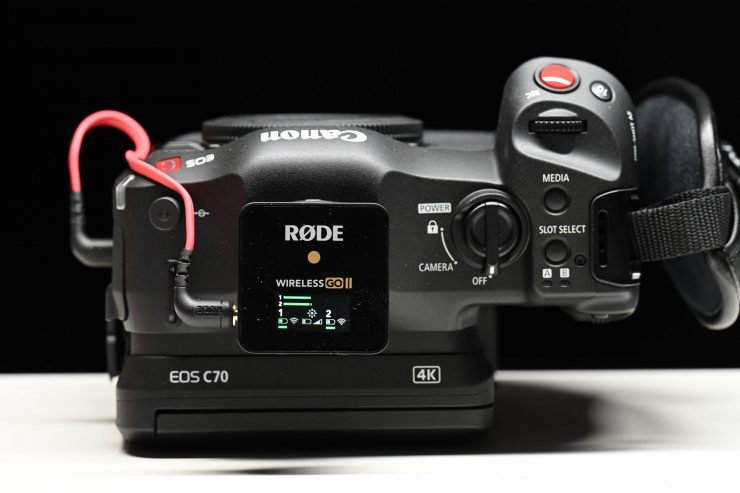
The LCD screen on the RX unit is easy to see and there are no menus to confuse users. On the LCD screen, you can see the battery level for both the RX and the TX, a gain indicator and the actual input level. The trouble is there is no indication of what those levels actually are. I wish RØDE put some sort of level indicators on the display. At least for the gain level, it is pretty easy to work out what gain level is being set.
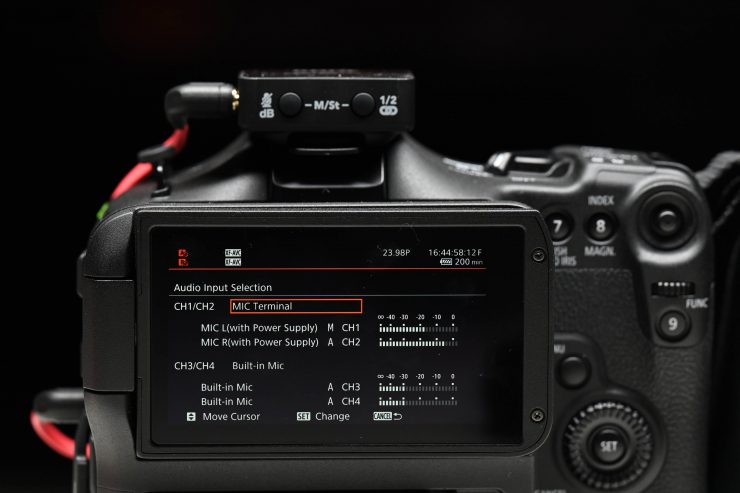
I found that the RØDE Wireless GO II was a really good run and gun solution for cameras such as the Canon C70. By placing it directly on the camera’s cold shoe and running out the cable into the 3.5mm stereo mic input on the C70 I was able to record two microphones without having to increase the camera’s footprint.
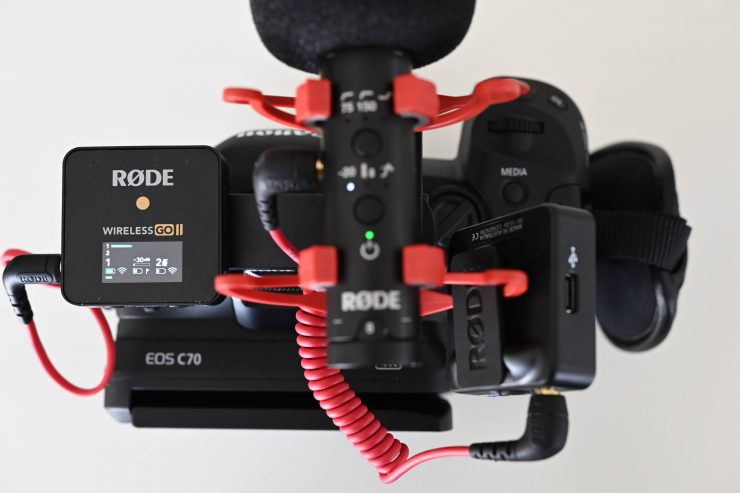
I could run a combination of the RØDE Wireless GO II and a RØDE VideoMic NTG, or just place the Wireless GO II RX unit and one TX unit on the camera directly. With the windsock, I could run the Wireless GO II as an alternative to a dedicated top mic if needed.
Even though the Wireless GO II is designed to be used as a traditional radio mic I actually found a few more uses for it. As the TX unit has a built-in microphone I found I could use it to capture ambient audio away from my camera. By simply just placing it in a room or closer to whatever object I was filming it allowed me to capture more immersive natural sound.
I also found that if I wanted to record audio notes when I was shooting I could just wear the TX unit and use it as digital notebook. If you are using camera that can record multiple tracks of audio this is not a bad option. This allowed me to leave audio notes to an editor in terms of what the shot was, where it could be used in a sequence etc. etc.
Reliability
This is a hard one for me to definitely comment on because it really depends on where you use the system. With the original Wireless GO I found that in one place it may work really well, and in another, it may not work at all. This is one of the pitfalls of using wireless mic systems that work on 2.4GHz.
I did my audio tests, both quality, and range with both TX units being close together to see if this affected the performance. I didn’t seem to have any effect, however, with any wireless system that uses 2.4GHz, the results can vary dramatically based on the environment you are in.
From my testing with the Wireless GO II, I found that I didn’t have any problems with it not working or getting any interference as long as the RF and TX units stayed reasonably close together. You just shouldn’t confuse a system like this with more expensive wireless mics that work on dedicated frequency bands.
Range
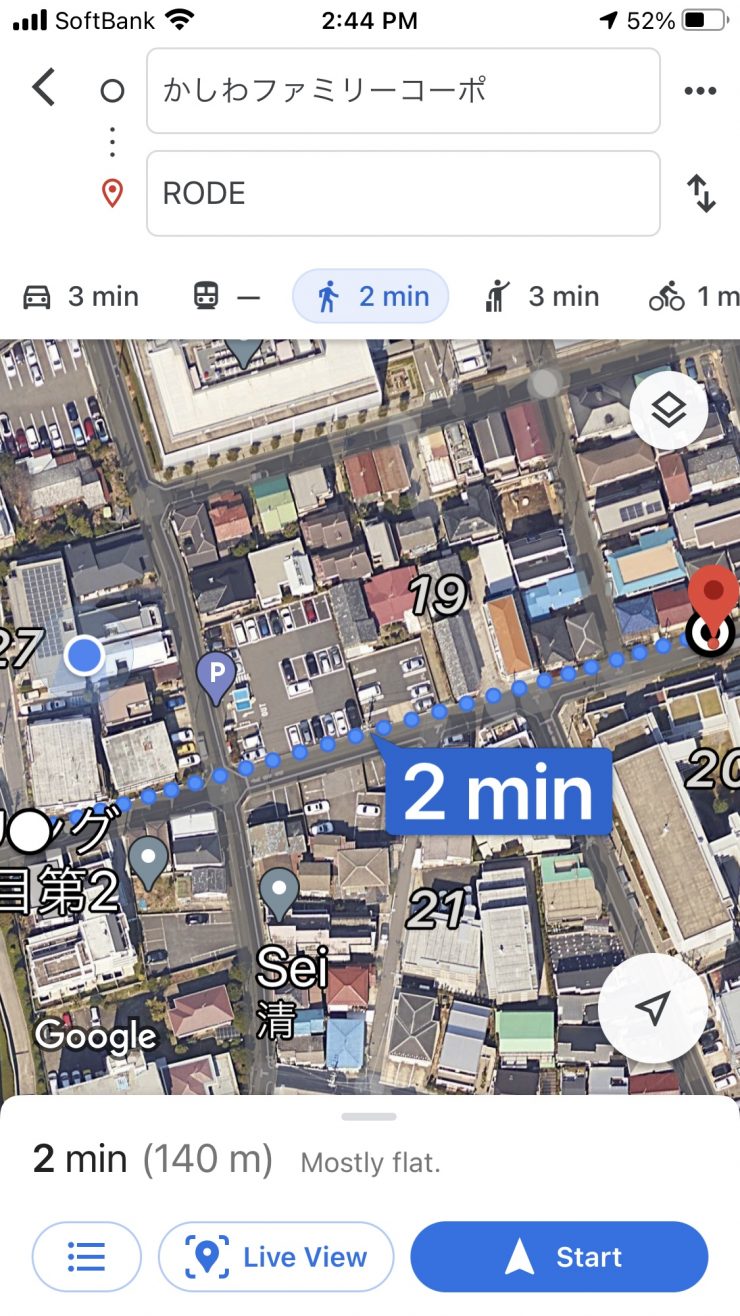
To test the range of the system I remained in line of sight of the RX and started walking away with the TX. I found that I could get around 140m (459ft) line of sight before the audio started to drop out. Now, RØDE claims a maximum operating range of 200m / 656′ (line of sight), but this is only going to be achievable on flat, open terrain where there is little wireless interference. I did this test in the middle of Tokyo which is one of the most heavily congested RF and WiFi traffic areas on the planet. I do this test in the exact same place everytime.
The system still seems to have the same issues as the previous version when it comes to using it when you don’t have line of sight. I found that if the TX units were not facing the RX unit then the range got diminished greatly. When I placed the TX units on the front of a subject and had then walk away from the RX then I started to get audio dropouts within around 25m (82ft). Again, the distance you can use them over will be determined by the environment you are in. In the environment you are in you may get better results than me.
Now, you do of course have the onboard recording capabilities that help mitigate audio dropouts and break up of the signal, however, you can’t monitor the audio from the internal recordings if you can no longer hear the audio that is being transmitted. If there is wind noise, rubbing of a microphone on clothes, etc. you won’t be able to hear that. You also then need to sync up that audio later without having access to matching timecodes.
As a reference, I found that with the original Wireless GO I could get around 85-90m (279-295ft) line of sight before the audio started to drop out.
Audio quality
This is a hard one to comment on. There are so many factors that can determine audio quality. What microphone are you using, what camera are you using, how good are your recording devices pre-amps, etc. etc.
When you use the built-in omnidirectional condenser capsule on the TX units the quality is actually not too bad. I wouldn’t say it is outstanding, but it’s certainly good enough for people who are going to be using the RØDE Wireless GO to record audio for presentations and situations where the sound just needs to be good and not great.
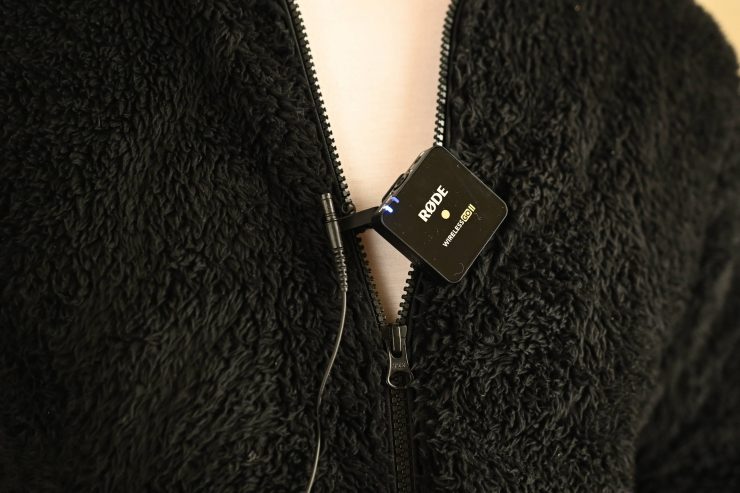
I did some tests using both the built-in microphone and with a RØDE lapel microphone. I recorded audio directly into a Canon C70 as well as recording internally. All the recordings were done at the exact same time and both the lapel microphone and the in-built microphone were positioned at the same height from where I was talking.
What I did notice is that the internal recorded level is a lot lower than the level I was recording on my camera. This is because you have audio input level adjustments on your camera.
Above you can listen to the results. I actually found that the in-built microphone sounded reasonably good, especially when compared to the RØDE lapel microphone that comes with the RØDELink Wireless system. The internal microphone on the TX units is, however, susceptible to the occasional pop. The internal recordings being done directly to the TX units sounded a lot better to me than the wireless audio that is being recorded. This didn’t really surprise me that much. If you are recording directly instead of transmitting a signal wirelessly and then having to input that signal into another device there are fewer cogs in the chain. That’s not to say that the results you get from transmitting audio compared to recording internally will be worse. Most people probably won’t be able to tell the difference.
What is interesting to note, and this will be good news to users of mirrorless and DSLR cameras, is the output level coming out of the RX unit is quite high. What this means is you can set the input level on your mirrorless or DSLR camera really low and the signal coming out of the Wireless GO is high enough that it produces the correct recording level. As most DSLR and mirrorless cameras have terrible pre-amps you want to set the input level on those cameras as low as possible so you get nice clean audio that doesn’t have any noise.
Battery Life
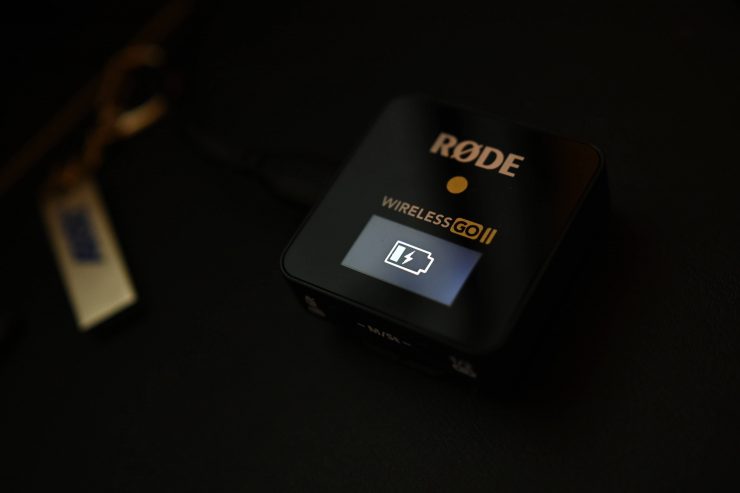
RØDE claims that Internal lithium-ion polymer batteries offer up to seven hours of battery life. From my testing, I found that I could get through a full day of use without any problems.
The nice thing is you can charge them via a USB Type-C port or to power them via external USB battery packs. Having an internal battery is a double-edged sword. On one side it keeps the unit self-contained and small, but on the other side, if that internal battery runs out you need to find an alternative way of powering it. With internal batteries, they will eventually start to lose their performance, however, with an entry-level product such as this you are just as likely to have replaced it or bought a new model before that happens.
Too much branding?


Front 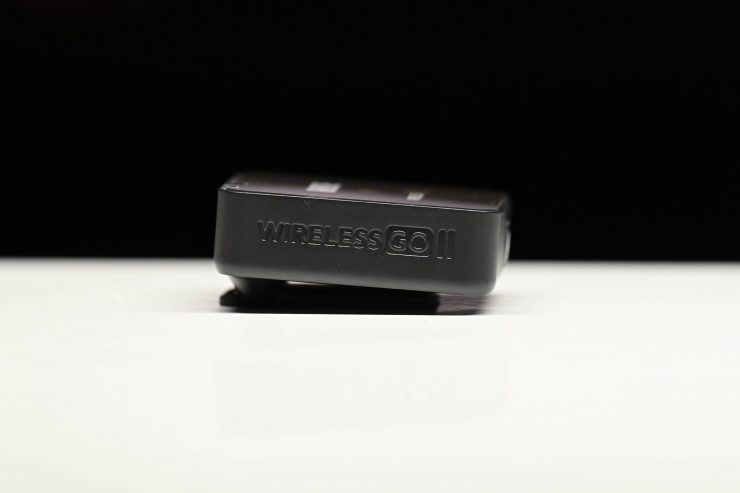
Side 
Back
RØDE does have a tendency to overbrand its products and the Wireless GO II is no exception. I am not quite sure why the RØDE logo has to be written on just about every part of the product.

Even though I almost always hide radio mic TX units so they are never seen, if you were to place it directly on someone where you wanted to use the in-built microphone then you may find this a problem.
At least, in my opinion, the branding should be a lot more subtle. However, it isn’t something a bit of black tape wouldn’t fix.
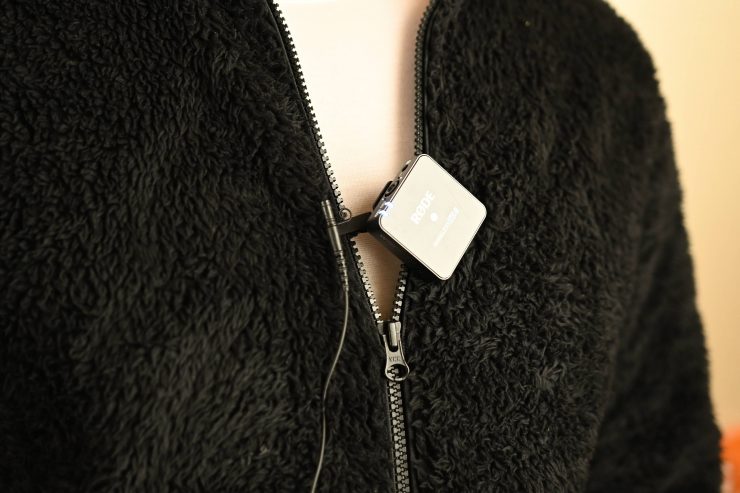
The other problem is that because the Wireless GO TX units are so shiny they are susceptible to picking up reflections and reflecting light. If you happen to be placing them directly on a subject you need to be aware of this.
What do you get?
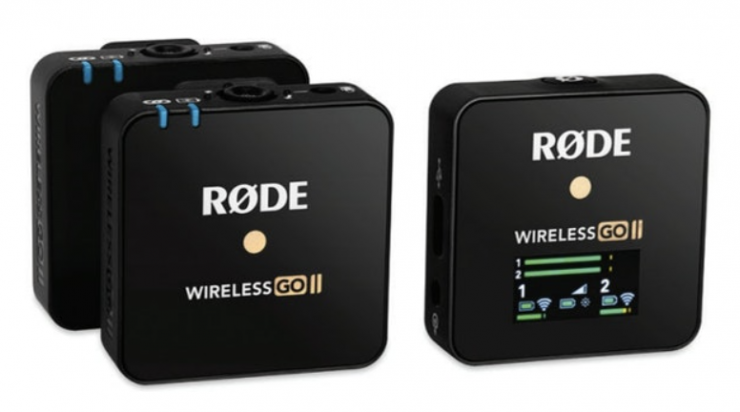
The Wireless GO II kit contains two transmitters and a single receiver, allowing users to capture two sound sources simultaneously.
Each Wireless GO II kit ships with a flat TRS memory cable for plugging into cameras and three USB-C to USB-A cables for connecting to computers for charging and recording (additional RØDE cables or adaptors are required for connecting to mobile devices and computers with USB-C inputs). There is also a handy carry pouch for keeping the kit tidy and secure.
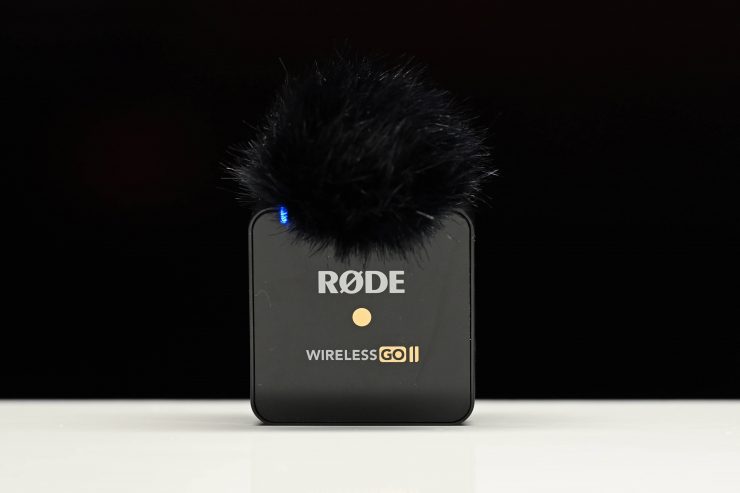
The Wireless GO II also comes with three furry windshields, which incorporate an innovative new twist-to-lock design for recording in windy conditions. These are way better designed than the originals and the twist-lock connector works well.

I’m glad they changed these because the windsock that came with the original Wireless GO for the built-in microphone on the TX unit was useless. It’s not that it didn’t work, but it didn’t secure properly and just kept falling off. I lost this within the first weeks of owning the product.
Price & availability
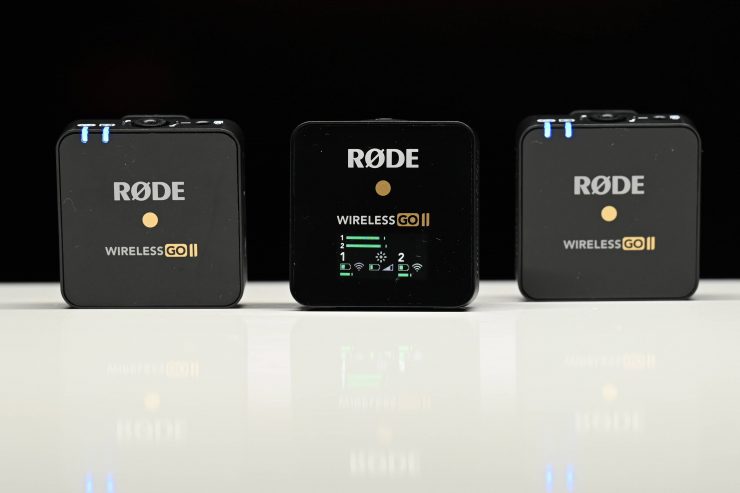
The Wireless GO II is shipping worldwide now. The retail price is $299 USD.
There is also a Rode Wireless GO II 2-Person Compact Digital Wireless Omni Lavalier Microphone System/Recorder Kit (2.4 GHz, Black) that costs $456.95 USD.
Find out more information at the Wireless GO II web page and the Wireless GO II Learning Hub.
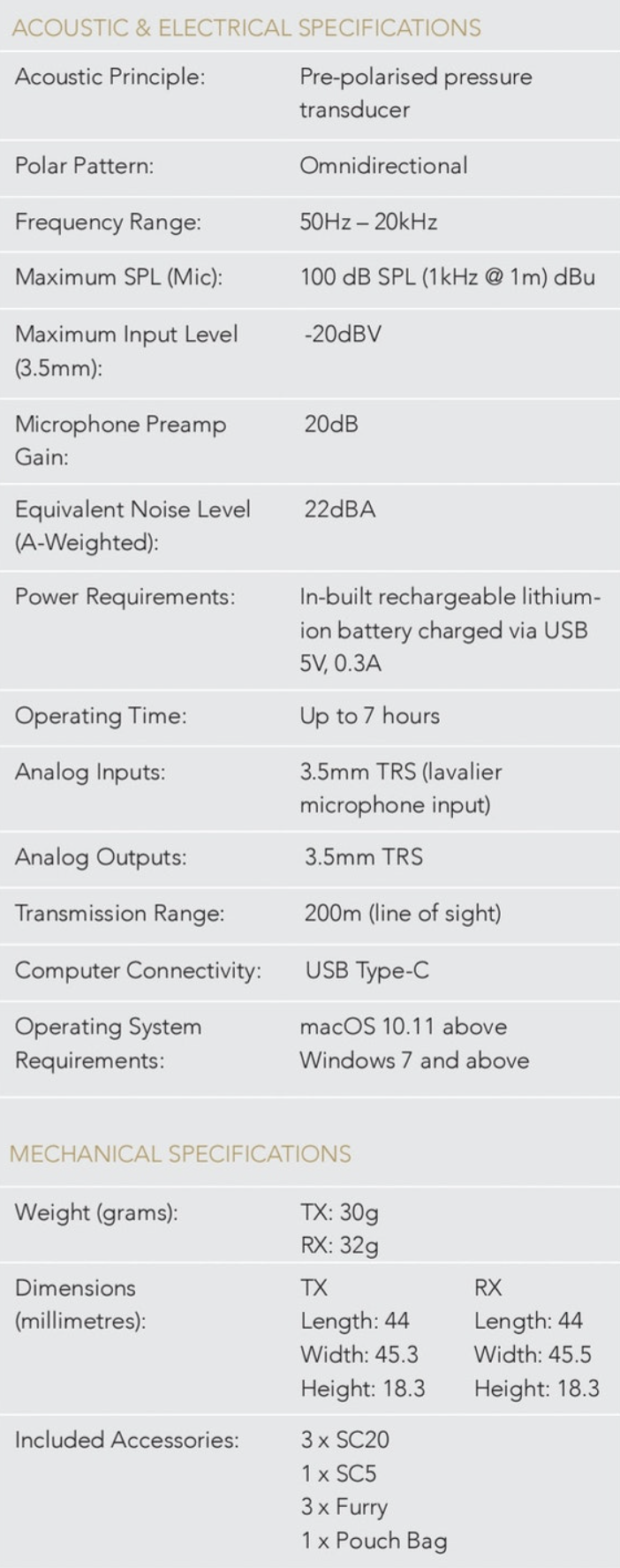
Competition
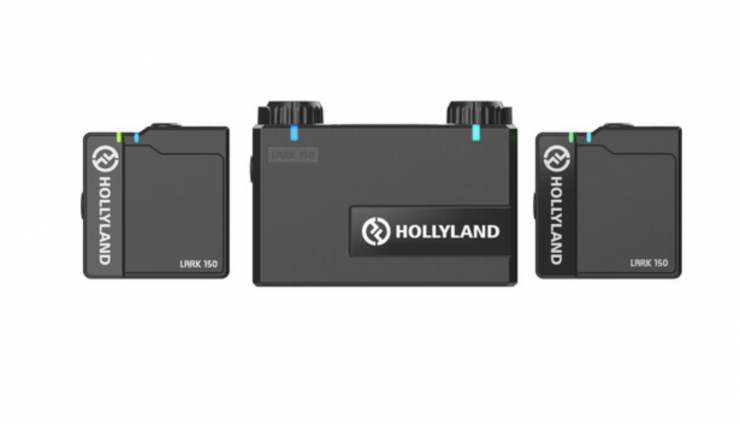
There really isn’t any direct competition that offers the exact same functionality and feature set. Other 2.4GHz systems that utilize two TX units and a single RX unit include:
- Synco WAir-G1-A2 Ultracompact 2-Person Digital Wireless Microphone System for Mirrorless/DSLR Cameras (2.4 GHz) $149 USD
- Hollyland LARK 150 Wireless Dual Microphone System (2.4 GHz) $329 USD
- Comica Audio BoomX-D D2 Ultracompact 2-Person Digital Wireless Micro phone System for Mirrorless/DSLR Cameras (2.4 GHz) $259 USD
- Samson Go Mic Mobile Dual Channel Lavalier System Kit $269.99 USD
Conclusion
The RØDE Wireless GO II builds on what was already a popular product for the Australian audio company. By adding new features and extending the operating range and reliability I think they have come up with a product that is sure to suit a lot of budget filmmakers, YouTubers, and even professional users who are looking for a second wireless system to have as a backup or use with a smaller sized camera. That’s not to say it couldn’t be used by just about anyone, because it certainly could.
The product isn’t without its issues or problems. The fact that you need to hook your Wireless GO II up to a computer to make certain changes through the RØDE Central app is far from ideal. A mobile app would make it a lot easier and once that is available that should alleviate a lot of the issues I experienced.. The internal recordings are fine, but there really should be a way of stopping and starting the recordings from the actual device without having to unpair a TX unit from the RX unit. Having one long recording is far from ideal in a lot of shooting environments. Not being able to edit these files in RØDE Central app is also an issue. The units are all susceptible to audio breakups if you are not using them line of sight.
For me personally, I find the RØDE Wireless GO II a good product to just have sitting in my bag as a backup solution or if I require a quick and easy-to-use third or fourth radio mic.
I also like using the Wireless Go II with smaller-sized mirrorless and DSLR cameras, as its small and compact size and ease of use make it a great compliment for a stripped-down run and gun kit. I have also used it quite a lot with the RØDE Videomic NTG, especially if I am using cameras such as the Panasonic S1H.
The Wireless GO II for the most part is easy to use, the audio quality is decent, the operating range is a lot better, and the new recording options and added functionality all make this system a no-brainer to have sitting in your kit bag. However, as I have already mentioned, you need to be very aware of what you can and can’t change without having to hook your Wireless Go II up to a computer. It needs a dedicated mobile app ASAP because I can’t see a lot of people carrying around a laptop just to be able to make setting changes on their TX RX units.
Just like the original, I think the Wireless GO II is going to be a pretty popular product for RØDE. Yes, it has some quirks but I expect those will be ironed out through firmware updates.

